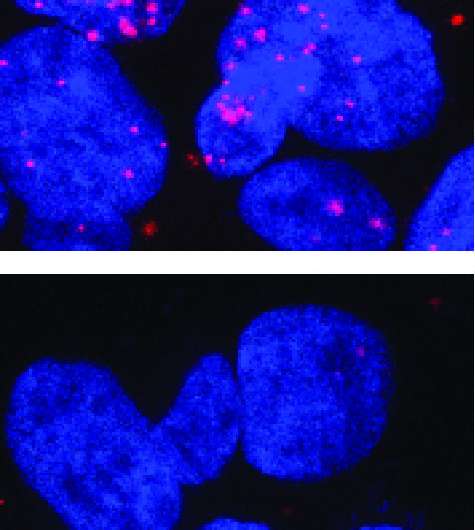Closing in on advanced prostate cancer

In most cases, prostate cancer is cured by surgery and/or radiotherapy. However, 20 percent of patients will need treatment to remove tumour cells but this treatment ceases to be effective after two or three years and the cancer recurs. Once this stage of the disease is reached, there is no cure. A team headed by Xavier Salvatella, ICREA researcher at the Institute for Research in Biomedicine (IRB Barcelona), has discovered a new avenue through which to attack prostrate cancer cells that have developed drug resistance. Published in the journal Structure, the study opens up new therapeutic avenues against a disease that causes 75,000 deaths a year in Europe alone.
A clear target and new sites of attack
The survival and proliferation of prostate tumour cells requires a highly active androgen receptor protein. The drug used to remove tumour cells interferes with this protein by binding to a specific region of the receptor and blocking its activity. "Over time, the protein accumulates alterations and mutates, and there comes a point when it is futile to target this region with drugs because, in fact, it is no longer there," says Salvatella.
The Molecular Biophysics Laboratory, headed by Salvatella, studies the tridimensional structure and atomic movements of the androgen receptor, with the aim of finding new binding sites. It has been known for some years that the protein has a small region, spanning only 20 amino acids, that is important for tumour cell survival. The study now describes for the first time that this region—usually without a structure and therefore a priori disregarded as a drug target—has a helix shape. After it becomes helical, another protein, called TFIIF, binds to it. The study reveals that this interaction stimulates the activity of the androgen receptor, and consequently facilitates the survival and multiplication of tumour cells.
"The fact that TFIIF is a folded protein with a more defined structure makes it easier to search for drugs that can interfere with its interaction with the motif. For prostate tumour cells that have become resistant to treatment, we believe that this interaction could be their last mechanism through which to survive and proliferate," explains Salvatella.
"Using cells in vitro, we have seen that if we remove this region, the TFIIF protein can't bind to the androgen receptor. So if the interaction does not occur, the androgen receptor loses activity, which is what we are interested in achieving," says researcher Elzbieta Maria Szulc.
In collaboration with experts in computational modelling, the scientists are searching for drugs that interfere with TFIIF. "We don't know whether such drugs will have a positive effect on cells, but the data available is promising," says Salvatella.
More information: Eva De Mol et al, Regulation of Androgen Receptor Activity by Transient Interactions of Its Transactivation Domain with General Transcription Regulators, Structure (2017). DOI: 10.1016/j.str.2017.11.007


















